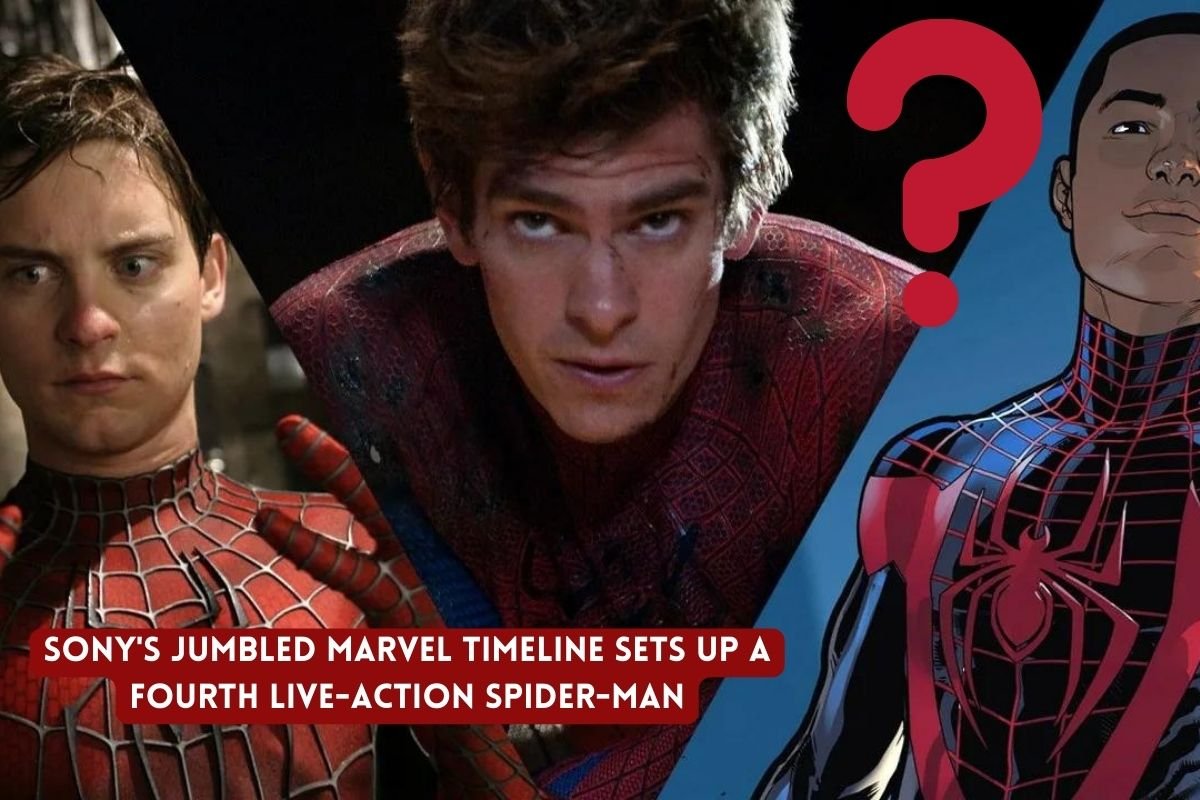Madame Web finally introduces Peter Parker to the Sony’s Spider-Verse movie timeline, but it raises more timeline questions than it answers. Madame Web was originally thought to be a multiverse project, given Cassandra Webb’s original Marvel Comics powers, potentially setting up a legitimate crossover with the MCU’s multiverse, but this is not the case. The Dakota Johnson film, on the other hand, is far more self-contained, establishing a new timeline within Sony’s multiverse web that begins in 2003.
Spider-Man is a constant, which is one of the unchangeable truths that the Sony Universe must adhere to, at least in the opinion of one of its primary creatives. When asked if Spider-Man existed in the Sony universe following Vulture’s (Michael Keaton) appearance to establish the Sinister Six, Morbius director Daniel Espinosa confirmed:
The reasoning behind this was that Spider-Man was always going to be a part of the Sony Universe, but maybe he would skip this particular branch of the universe because Madame Web had three Spider-Women. The origin story of Peter Parker is surprisingly introduced by Madame Web at the earliest point ever depicted in a Marvel film: the time of his birth. However, that portion of Madame Web’s resolution isn’t as simple as it seems.
Who Is Spider-Man in the World of Madame Web?
Throughout Madame Web, there is a secondary storyline about Ben Parker (Adam Scott) becoming Uncle Ben after his sister-in-law Mary gives birth to an unnamed nephew. Cassie, played by Dakota Johnson, attends her baby shower early in the film, and by the end, Mary is in labor and Peter is born off-screen. Interestingly, he is never named, which serves as a gag for the baby shower scene.
Madame Web Is Too Early for Tom Holland
Tom Holland’s Spider-Man made his MCU debut in 2016 at the age of 15 (despite Homecoming’s infamous “8 years later” mistake, which has since been corrected). That means he couldn’t have been born in 2003, the year Madame Web is set. There was some speculation that Madame Web was set in the MCU’s Sacred Timeline, but the date provides even more confirmation.
Madame Web is set too late for Maguire and Garfield
Madame Web’s established setting of 2003 may appear to be a long time ago, given that Cassie Web gained her powers in-universe 21 years ago, but horribly, we are now at the point where a nostalgic look back 21 years is still not as long ago as the release of Sam Raimi’s Spider-Man. Raimi’s Spider-Man was created in the early 1980s and is thus categorically excluded here. Even Andrew Garfield’s Spider-Man was 17 in 2012, making him too old for the 2003 birth year. Unfortunately, that eliminates the possibility of Madame Web and either of the first two Spider-Men collaborating in a future Madame Web sequel.
Madame Web, what universe is she even in?
Even though it would have been easy to place Madame Web in the same universe as Tom Hardy’s Venom films, Sony appears to have taken a different approach. It is immediately established as a stand-alone in the official synopsis, and Lorenzo di Bonaventura gave ComicBook an explanation for the choice.
If that wasn’t clear enough, Madame Web’s actions establish the film as a distinct entity. The appearance of the three female Spider-People provides a strong indication that this is not Venom’s universe. Otherwise, where has the superhero cabal gone? Why weren’t they concerned about the arrival of several symbiotes? And where is Peter Parker, who was born at the end of Madame Web? Morbius’ director has also confirmed that the Spider-Man from Sony’s universe is set behind the scenes, predating Madame Web.
Madame Web Let Spider-Man Down
Madame Web could have been the ideal opportunity to introduce Spider-Man into the Sony universe: the 2003 setting always seemed like a deliberate decision to include the necessary prequel stage for that purpose. Setting the story in 2003 feels less logical without establishing Peter Parker’s family history. Yes, we get the Uncle Ben/Mary Parker storyline, but if it’s removed, it has literally no impact on the rest of the film; worse, without the connection to another future Spider-Man, it looks like fan-baiting.
Even though Sony’s Spider-Verse was always intended to be an annex in which Spider-Man may never appear, Peter Parker (or Miles Morales, to be more specific) is conspicuously absent. Without their greatest nemesis, villains lose their context and definition, and what remains is a procession of underwhelming villains to fight. It all should have pointed to a real Spider-Man reveal (and it still could), and it’s difficult not to believe that Madame Web’s missed opportunity to reveal which Spider-Man rules the Sony Spider-Verse was a huge oversight.
